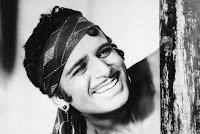Frieda's physical body and the extensions of her corporeality become a site of fantasy, a channel and means for the child protagonist to envision a separate reality. The protagonist "she" seems to use bodies as visual referants of mise-en-scène to not only understand the world around her, but to also create alternate storylines (selves) and to then become lost in such cinematic spaces (perhaps a protective mechanism). She wishes that "Frieda had a handsome young prince for a husband" (45), but the fantasy is shattered by the appearance of a new maid, a "successor [who] is an ugly hunchback" (46). Even Frieda's last name (Splitter) suggests doubling and a splitting of the self: beautiful vs. ugly, reality vs. fantasy, idealized vs. realized. It is further interesting that after both Frieda and her father have left, the then described ten-year-old alludes to Jules Verne's Twenty Thousand Leagues Under the Sea where "Captain Nemo is another one of her heroes" (49). The scene suggests a libidinal desire: "octopus tentacles that force their entry into the submarine, the "Nautilus" (49)...
 |
| Hokusai Katsushika's The Dream of the Fisherman's Wife http://en.wikipedia.org/wiki/File:Tako_to_ama_retouched.jpg |
...and it also sets up a movie screen-like influence of male bodies, specifically that of Douglas Fairbanks in Thief of Baghdad.
 |
| Douglas Fairbanks in Thief of Bagdad (1924) http://www.fandor.com/blog/wp-content/uploads/2011/07/Thief-of-Bagdad.jpg |
 |
| Actor James Mason as Captain Nemo in 20,000 Leagues Under the Sea (1954) http://media.comicvine.com/uploads/6/64422/1543537-disneynemo.jpg |
Both Douglas Fairbanks and Captain Nemo (at least a filmic version of Prince Dakkar) bear a strong resemblance to the characterization of the young girl's father and ground her sexual musings of racialized others who simultaneously protect and pleasure her. More is to be said of the other "actors" who make appearances (the school teacher and the foreign-looking swimmer, love interest), but at this point I would offer that the visual impact of these allusions and mise-en-scène-like stagings in Dark Spring suggest not only the power of cultural references to shape social constructions of gender but also how visuality influences the artist, the viewer, and all points of signification in between.
The uncanniness of Verne's Nautilus and one of Zürn's drawings:
 |
| The Nautilus http://upload.wikimedia.org/wikipedia/commons/f/f2/Nautilus_Neuville.JPG |
 |
| Unica Zürn's “Hexentexte" (1945) |
Of Further Interest: http://www.brooklynrail.org/2009/06/artseen/poster-boy-brooklynovation_2
Works Cited
Zürn, Unica. Dark Spring. 1969. Trans. Caroline Rupprecht. Cambridge, MA: Exact Change, 2000.
Print.
No comments:
Post a Comment